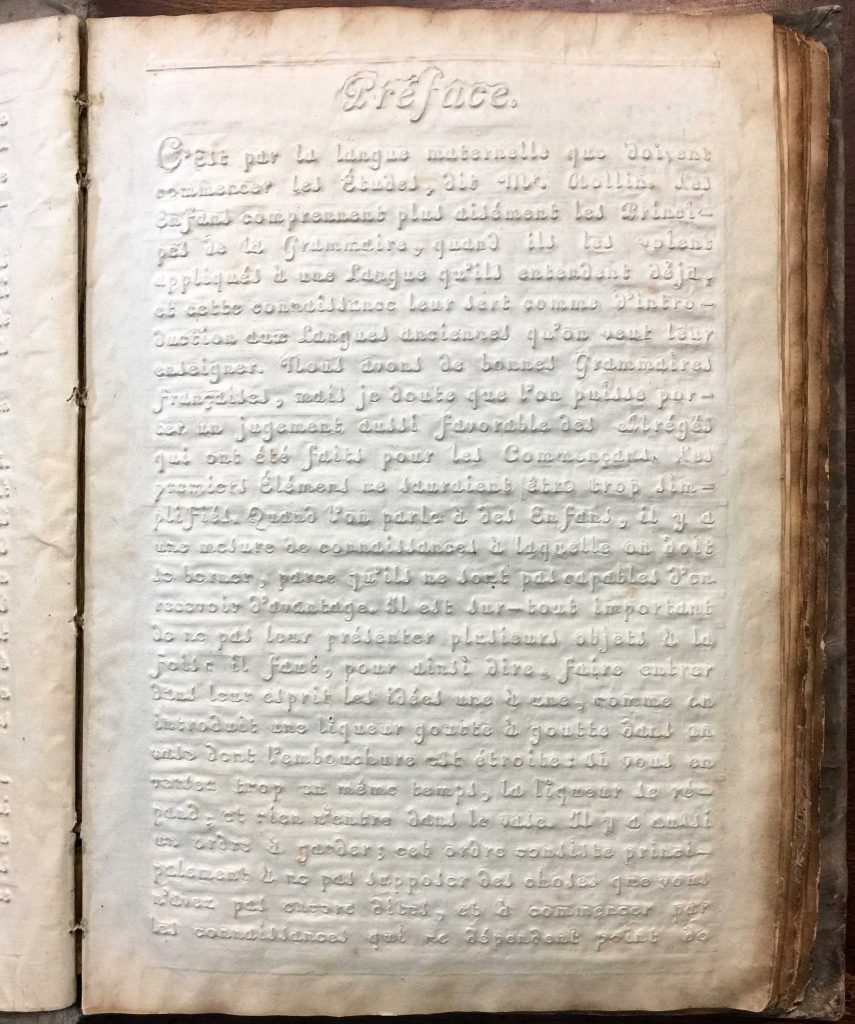
Blind literacy has always been a problem, but it used to be a much bigger issue than it is today. At the beginning of the 19th century, the only reading option for the blind was a system invented by Valentin Haüy, founder of the Royal Institute for Blind Youth (Institution Royale des Jeunes Aveugles) in Paris. Haüy’s system consisted of embossed versions of normal letters. Although the idea of embossing letters was an important development in blind literacy at the time, it was difficult to read and made it practically impossible for the blind to write. It was said to be “talking to the fingers with the language of the eyes.”
Night Writing
A part of Napoleon’s army, Charles Barbier witnessed many soldiers killed when trying to read maps and letters at night, being exposed by the lights they were using to see. In an attempt to create a way for soldiers to read at night without light, he invented night writing. Night writing was a 12 dot system of raised dots that could be read by the fingers.
When presented with Barbier’s night writing system, the government was not interested in using it for the military. Convinced that it was a good idea and could be used elsewhere, he brought his system to the Royal Institute for Blind Youth, where Louis Braille happened to be a student.

Paris, France
Louis Braille

Louis Braille tragically lost his sight in an accident when he was 3 years old. Playing in his father’s leather workshop, an awl slipped from his grip and landed in his eye. Despite the best medical care available at the time, the infection eventually spread to his other eye and left him completely blind.
A very good student and intelligent boy, Braille was offered a scholarship to study at the Royal Institute for Blind Youth in Paris. While he was a student there, Charles Barbier visited and shared his night writing system with the school. Braille saw potential in what Barbier presented and decided to work to improve it. He identified a few issues with the night writing system; the absence of punctuation or numbers, the 12 dot cells were too large to be read with a single touch, and the phonetic nature of the system left little room for orthography.
Louis Braille finished refining Barbier’s night writing system at the age of 15, later publishing books on how to use his system as well as a few revisions of the system. Braille’s system contained 6 dots instead of 12, making it small enough to be read with the single touch of a finger. Braille and his peers used the Braille writing system during his time at the institute. He continued to teach it at the school when he got older, but the system was not officially adopted by the school until 2 years after his death.
Sources
https://en.wikipedia.org/wiki/Night_writing
https://en.wikipedia.org/wiki/Braille
https://en.wikipedia.org/wiki/Louis_Braille